Related Research Articles

Schinia, commonly called flower moths, is a large genus of moths belonging to the family Noctuidae. The genus has a Holarctic distribution with the vast majority of species being found in North America, many with a very restricted range and larval food plant.
Rhizagrotis is a genus of moths of the family Noctuidae. The genus was erected by John Bernhardt Smith in 1890.
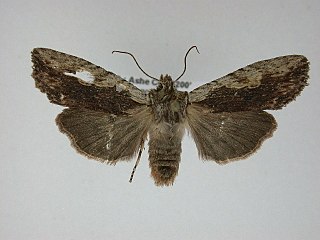
Lithophane innominata, the nameless pinion, is a moth of the family Noctuidae. The species was first described by Smith in 1893. It is found in North America from Nova Scotia and New Brunswick west to Vancouver Island, south through the mountains both eastwards and westwards. Furthermore, it is found throughout the wooded parts of Alberta, north to Lake Athabasca.

Euxoa tronellus is a moth of the family Noctuidae first described by Smith in 1903. It is found in western North America from western North Dakota and South Dakota, west across southern Saskatchewan and southeastern Alberta to Washington, south to southern California and northern New Mexico.

Euxoa medialis, the median-banded dart, is a moth of the family Noctuidae. The species was first described by Smith in 1888. It is found in North America from southern Manitoba and central Wisconsin, west to southwest Alberta and California; north to southern Alberta and south to south-central Mexico.
Abagrotis trigona, the luteous dart, is a moth of the family Noctuidae. The species was first described by Smith in 1893. It is found in North America from western South Dakota and south-western Manitoba west across southern Saskatchewan and Alberta to Vancouver Island, south to the Mexican border. There is also a disjunct population in Ohio.
Agrochola verberata is a moth in the family Noctuidae first described by Smith in 1904. It is found in western North America, from south-central Saskatchewan west to Alaska and coastal British Columbia, south to at least south-western Montana and south-western Colorado.
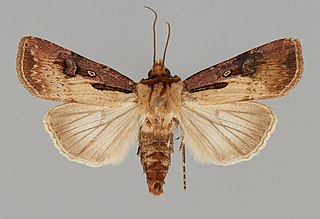
Agrotis obliqua is a moth of the family Noctuidae first described by Edgar Albert Smith in 1903. It is found in North America from Newfoundland to Vancouver Island, south to Colorado, Arizona and California.

Agrotis robustior is a moth of the family Noctuidae first described by Smith in 1899. It is found on the northern Great Plains of North America, the Prairie Provinces of Canada southward to South Dakota and Colorado.

Anicla exuberans is a moth of the family Noctuidae first described by John Bernhardt Smith in 1898. It is found in North America from central Mexico north to the dry interior of southern British Columbia, southern Alberta and south-western Saskatchewan.
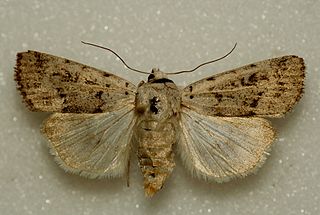
Anicla tepperi is a moth of the family Noctuidae first described by Smith in 1888. It is found in North America from eastern Manitoba west to the Alberta foothills, north to about Lloydminster and south to southern Colorado.
Euxoa siccata is a species of moth of the family Noctuidae first described by Smith in 1893. It is found in North America, including Alberta and Colorado.
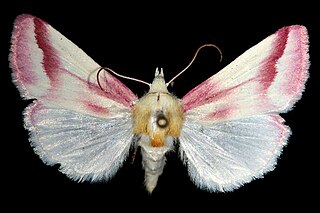
Schinia gaurae, the clouded crimson, is a moth of the family Noctuidae. The species was first described by James Edward Smith in 1797. It is found in North America from Illinois west across southern Saskatchewan and Alberta, south to Florida, Texas, Arizona and south into Mexico.
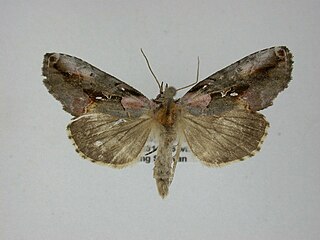
Eosphoropteryx thyatyroides, the pink-patched looper moth or pink-tinted beauty, is a moth of the family Noctuidae. The species was first described by Achille Guenée in 1852. In North America it is found from Nova Scotia and northern Ontario south to Minnesota, Michigan, Ohio and along the Appalachians from Maine to eastern Tennessee and western North Carolina; and to the west, it occurs from central Alberta and southern British Columbia, south in the Cascades to southern Oregon, and in the Rocky Mountains to northern Idaho.
Euxoa atomaris is a moth of the family Noctuidae first described by Smith in 1890. It is found in North America from North Dakota, southern Alberta and British Columbia, south to central New Mexico, Arizona and southern California.
Euxoa aurulenta, the dune cutworm, is a moth of the family Noctuidae. The species was first described by Smith in 1888. It is found in North America from Ontario west to Alberta and Washington, south to Illinois, Nebraska, Colorado and Arizona.
Diarsia calgary, the Calgary dart, is a moth of the family Noctuidae. The species was first described by Smith in 1898. It is found in North America in the mountains and foothills from Yukon, south to Arizona and New Mexico, west to the coast of British Columbia. There is a disjunct population in central western California.
Phalaenostola hanhami, also called Hanham's owlet or Hanham's snout moth, is a litter moth of the family Erebidae. The species was first described by J. B. Smith in 1899. It is found in North America from Nova Scotia, west across Canada to central Alberta, south to Massachusetts and New York.
Euxoa edictalis is a moth of the family Noctuidae first described by Smith in 1893. It is found in North America from south central Alberta and east-central Montana, west to south-central British Columbia, south to central California, southern Nevada, central Utah and western Colorado.
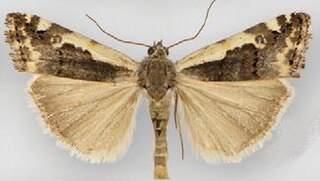
Tarache augustipennis, the narrow-winged midget, is a moth of the family Noctuidae. The species was first described by Augustus Radcliffe Grote in 1875. It is found in North America from Manitoba to south-western British Columbia, south to Arizona and east to Texas.
References
- "932689.00 – 10176 – Rhizagrotis stylata – (Smith, 1893)". North American Moth Photographers Group. Mississippi State University. Retrieved November 15, 2020.
- Anweiler, G. G. (November 14, 2003). "Species Details Cerapoda stylata". University of Alberta Museums. E.H. Strickland Entomological Museum. Retrieved November 15, 2020.